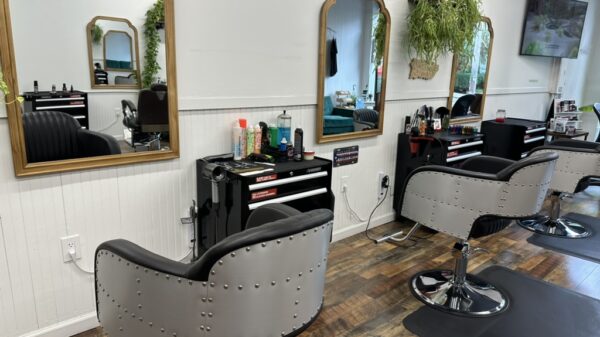A group of thieves executed a brazen robbery at the Louvre in Paris, stealing priceless jewels from the museum’s collection in broad daylight. The incident, which occurred while tourists were present, revives memories of notorious heists linked to the infamous Pink Panthers gang, known for their audacious thefts across Europe and Asia.
The heist took place in the Apollon Gallery, where the French crown jewels are displayed. According to French officials, the thieves employed a crane-like lift to access the museum, smashing display cases and fleeing the scene on motorcycles within a mere four minutes. No injuries were reported, but the museum was closed following the incident for further investigation.
The stolen items included nine pieces from the jewelry collection of Napoleon III, among them the crown of Empress Eugénie, which is adorned with gold, emeralds, and diamonds. One piece was found outside the museum, but the whereabouts of the remaining items remain unknown. The total value of the stolen jewels has not been officially disclosed, but they have been described as having “inestimable value” by France’s interior minister.
Echoes of the Pink Panthers
The operation’s sophistication has drawn comparisons to the Pink Panthers, a network of loosely organized thieves responsible for over $500 million in stolen goods over nearly two decades. According to Ron Noble, former Interpol Secretary General, the gang includes hundreds of members, primarily from Eastern Europe, many of whom have military backgrounds.
The Pink Panthers are known for their meticulous planning and expert execution. They often conduct extensive surveillance before a heist, using small teams to execute their plans in under a minute. For example, in a daring robbery in Dubai, the gang drove vehicles into a mall, smashing their way into a jewelry store and escaping in just 45 seconds.
Their notorious history includes the largest art robbery in Japanese history and a $40 million jewel heist in the UK, where thieves concealed gems in a jar of cold cream. Despite ongoing efforts from law enforcement, many of their stolen items, particularly diamonds and jewelry, remain unrecovered.
Investigation and Recent Heists
Following the Louvre robbery, French police discovered evidence including a power saw, gloves, a walkie-talkie, and a can of gasoline, indicating a well-planned operation. Criminologist Alain Bauer stated that DNA left at the scene could potentially lead to the identification of the thieves, provided they are known to law enforcement. “We will catch them,” Bauer asserted, while acknowledging the difficulty of recovering the stolen jewels.
This incident is not isolated. Recent years have seen a surge in high-profile museum heists across Europe. In 2019, thieves stole over $120 million worth of jewels from the Dresden’s Green Vault museum in Germany, and in 2023, items went missing from the British Museum as part of a scandal involving a former employee.
The Louvre robbery serves as a reminder of the challenges faced by museums in protecting their collections. Art historian David Chanteranne noted that the jewels were not stored in reinforced cases for “historical accuracy,” which may have contributed to their vulnerability during the heist.
While the investigation continues, the daring nature of the Louvre robbery highlights the ongoing issue of art theft and the lengths to which criminals will go to acquire valuable treasures.





































































